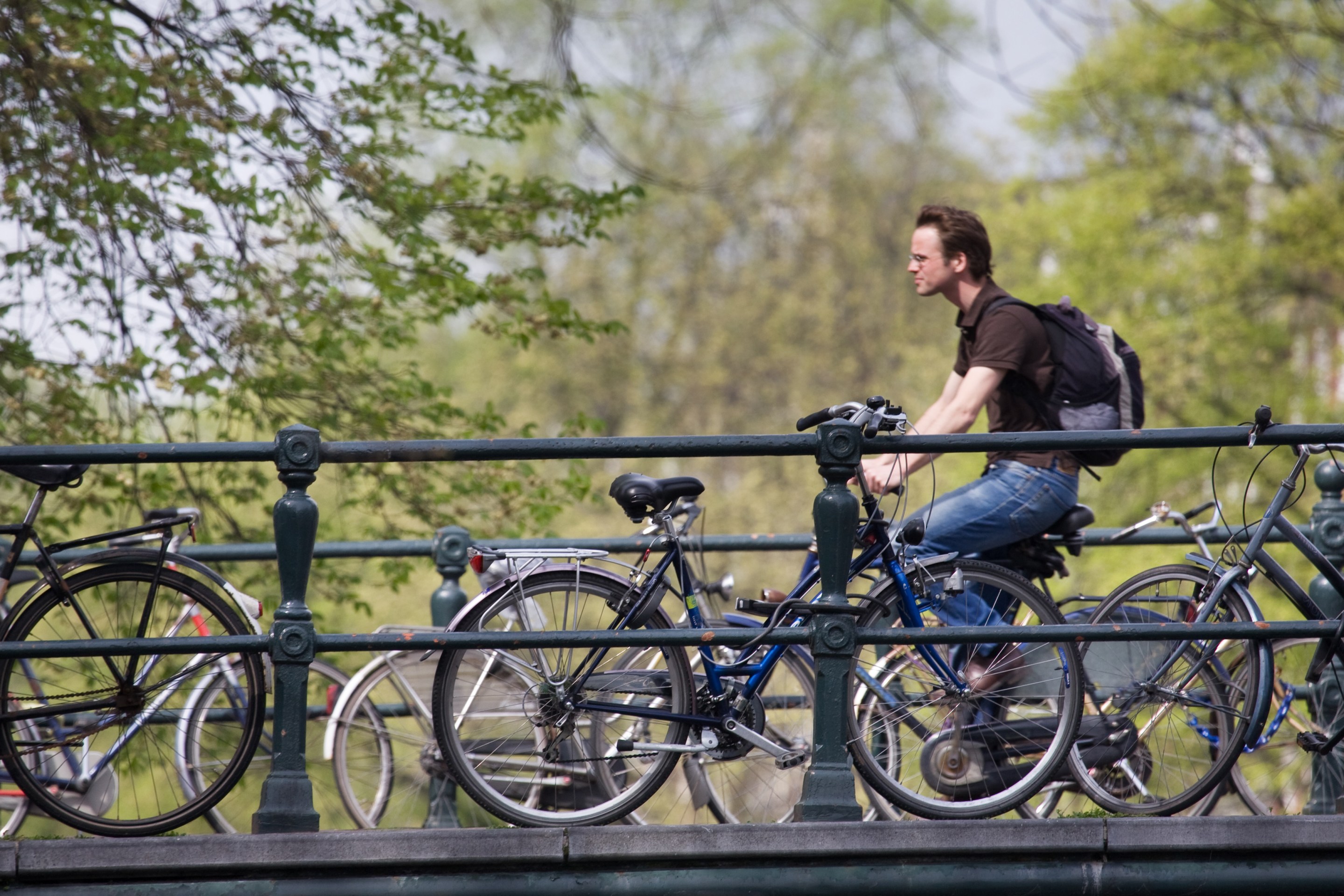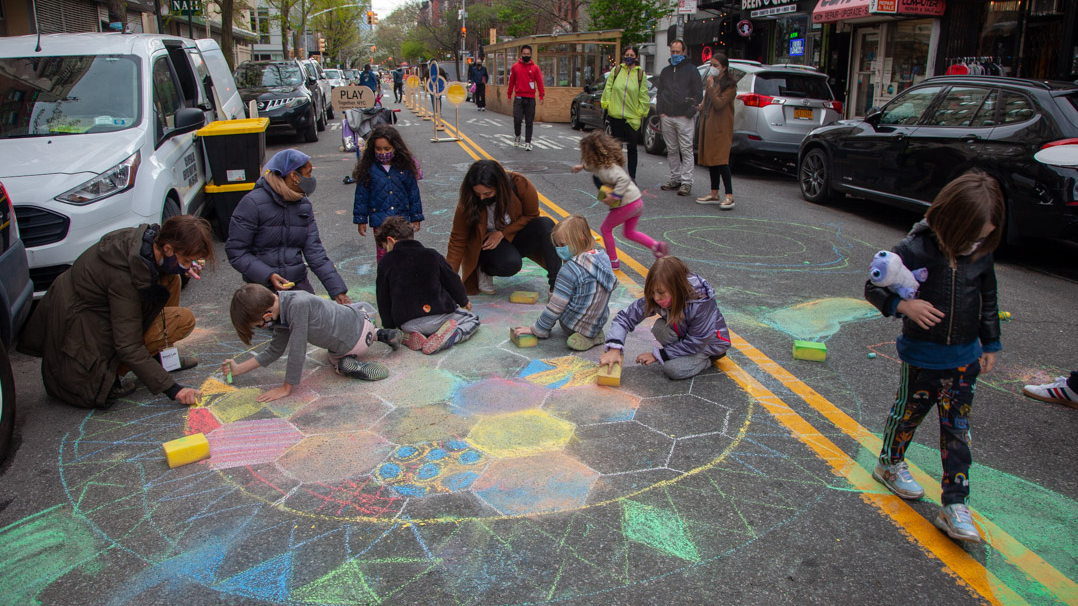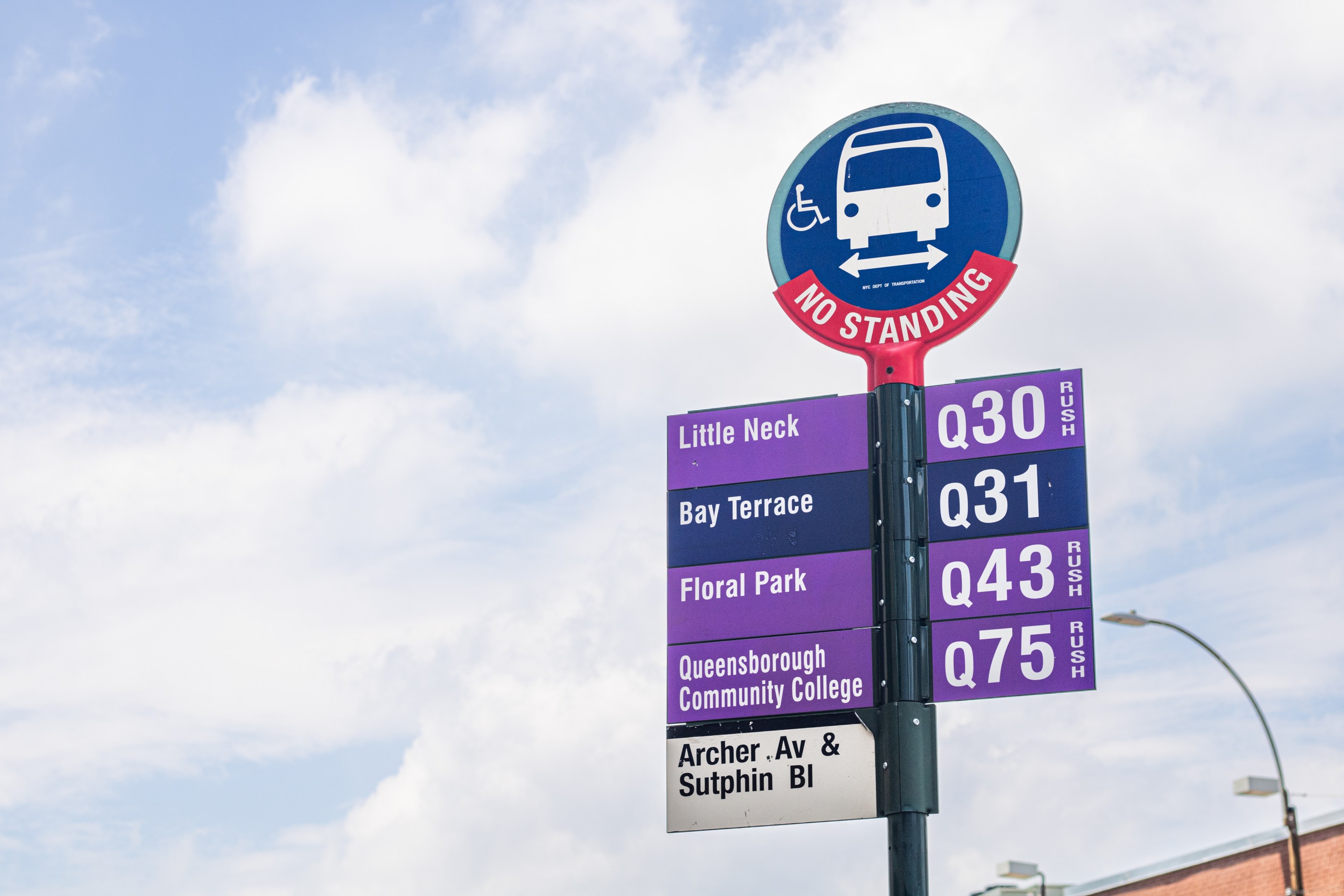A fact sheet [PDF] released by the city's health department today makes the case that New York City's walkability contributes to the health of residents -- but a deeper look into the research shows that not all New Yorkers are benefitting equally from walkable neighborhoods.
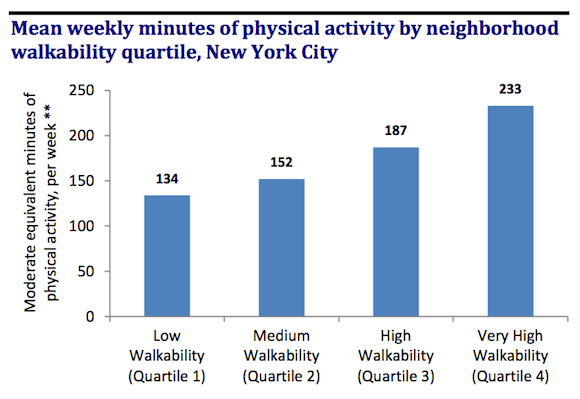
The brief draws on recent data from two sources: Research by Columbia University academics on the walkability of the city's neighborhoods and the health department's own survey of 3,800 New Yorkers about physical activity and transit.
The Columbia researchers measured walkability using five components: Residential density, density of street intersections and subway stops, land use mix, and an estimate of the prevalence of large retail parking lots. The health department tracked the health and transportation behaviors of New Yorkers through surveys, accelerometers, and GPS devices. By looking at the two datasets together, the bottom line became clear: "Physical activity levels were substantially higher in people living in higher-walkability neighborhoods," the report says.
People in the most walkable neighborhoods averaged 233 minutes of moderate physical activity per week, burning 1,200 calories, while people living in the least walkable areas averaged 134 minutes of activity per week, burning only 690 calories.
The Columbia academics, based in the university's Built Environment and Health Research Group, dove deeper by adding income to the equation. Matching places with the same walkability scores, they compared neighborhoods where at least 20 percent of the residents live in poverty with neighborhoods where fewer than 20 percent of residents live in poverty.
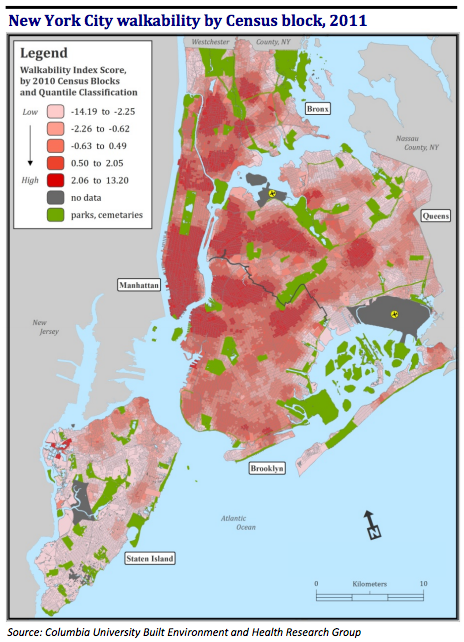
Despite having the same walkability scores, poorer neighborhoods had lower physical activity rates than the wealthier counterparts. The researchers visited the neighborhoods and weighed more fine-grained factors to determine walkability, including car crash rates, number of street trees, sidewalk width, and measures of street life like sidewalk cafes and street vendors.
Poorer neighborhoods had fewer street trees and a higher density of car-pedestrian crashes than wealthier neighborhoods, and were less attractive places for residents to walk than the density-based scores would otherwise suggest.
"Low-income urban neighborhoods are less conducive to walking than they would appear to be if we considered only population density, land use mix, and other indicators," the researchers said. The researchers suggest that the city concentrate streetscape and sanitation efforts in low-income communities to encourage residents of otherwise-walkable communities to walk more often.

